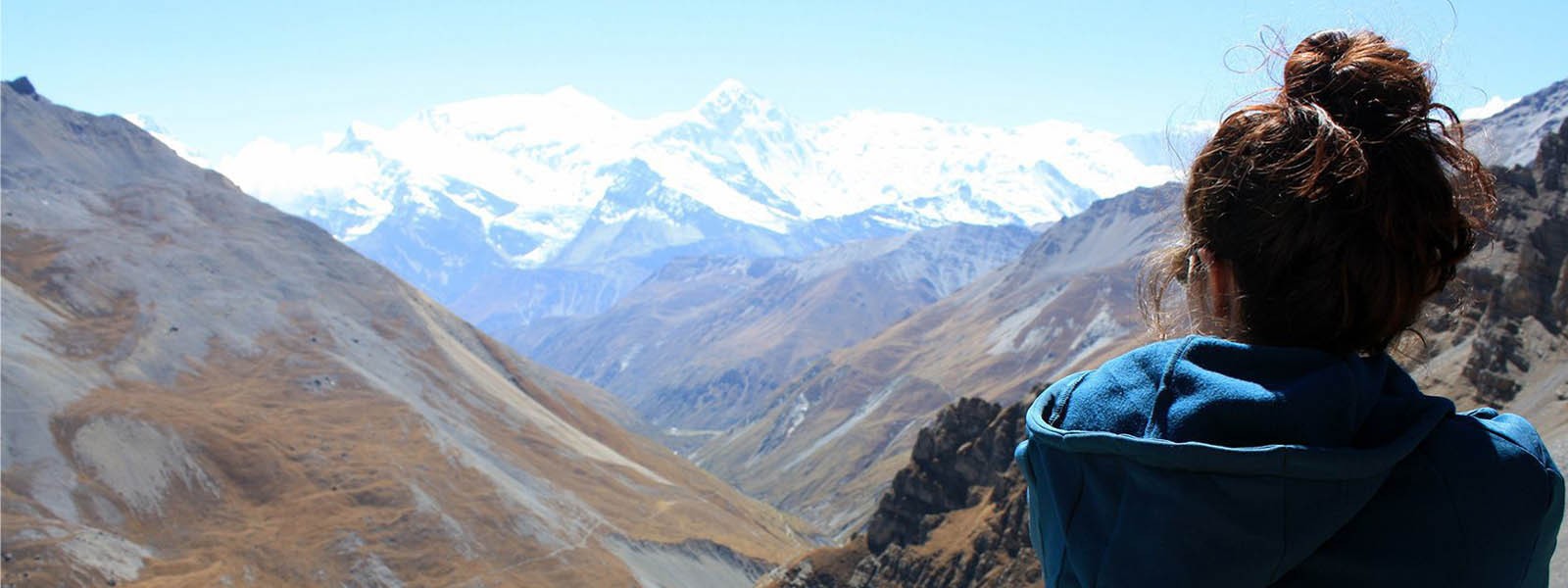
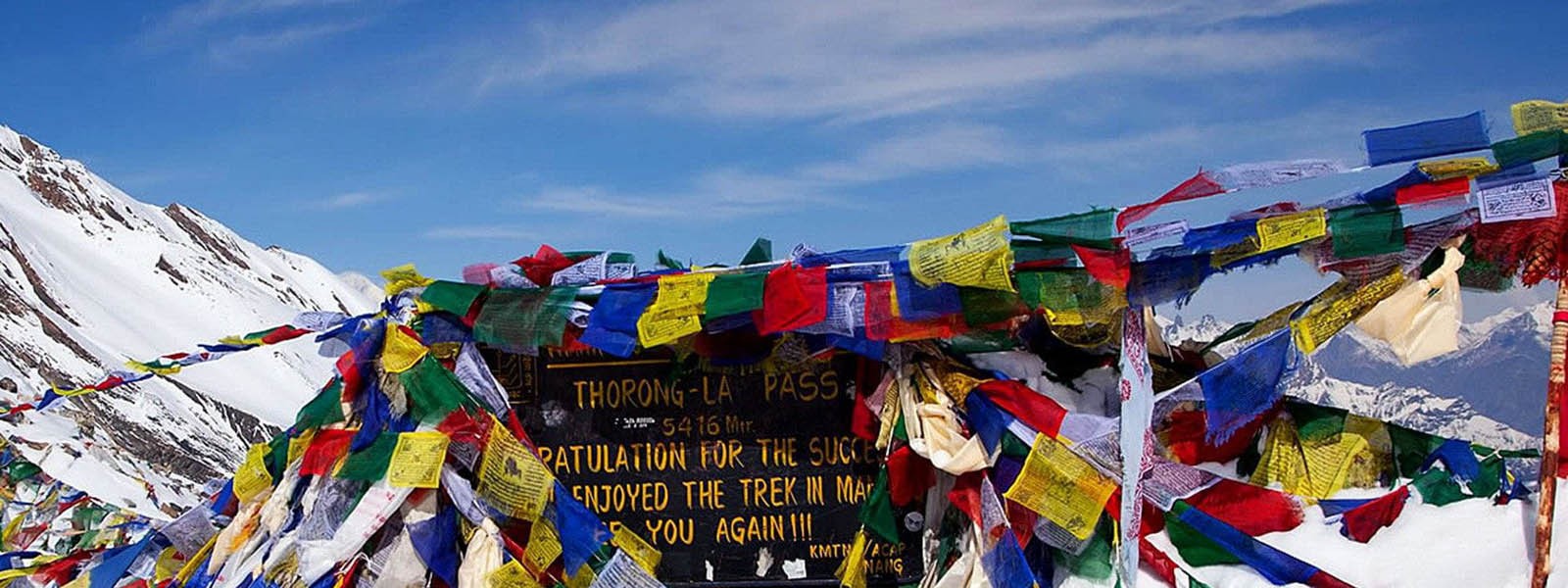

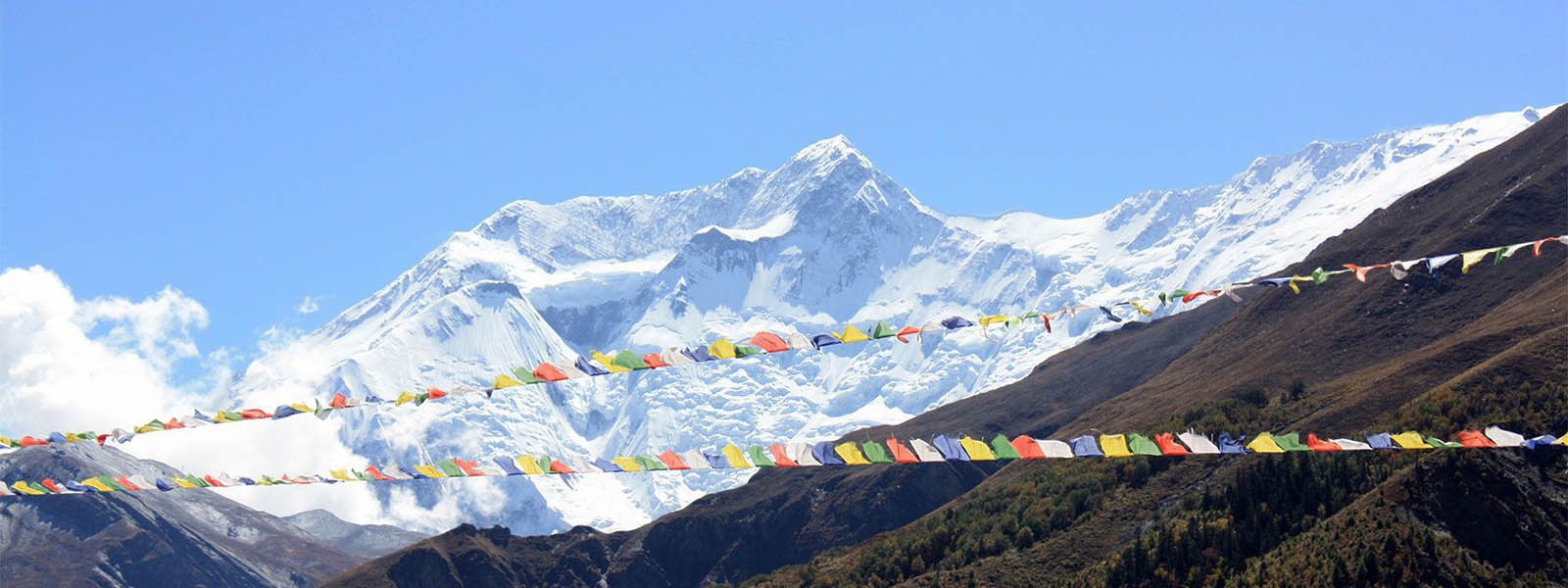
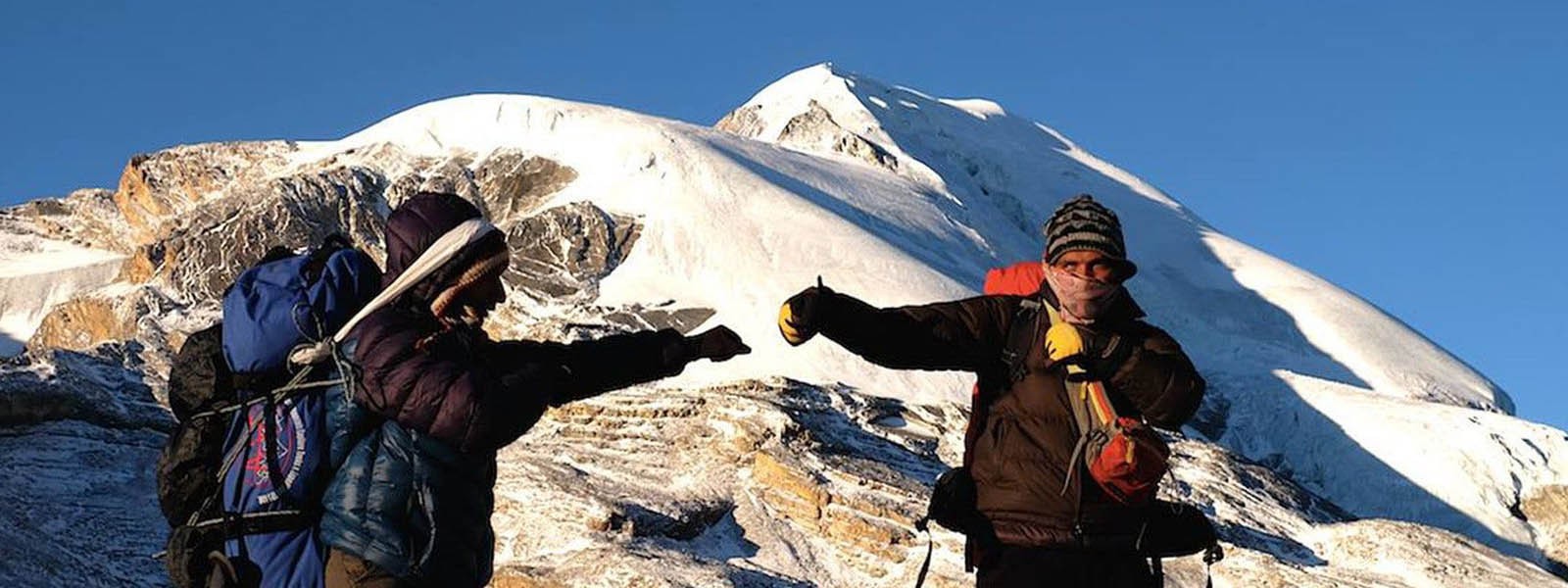
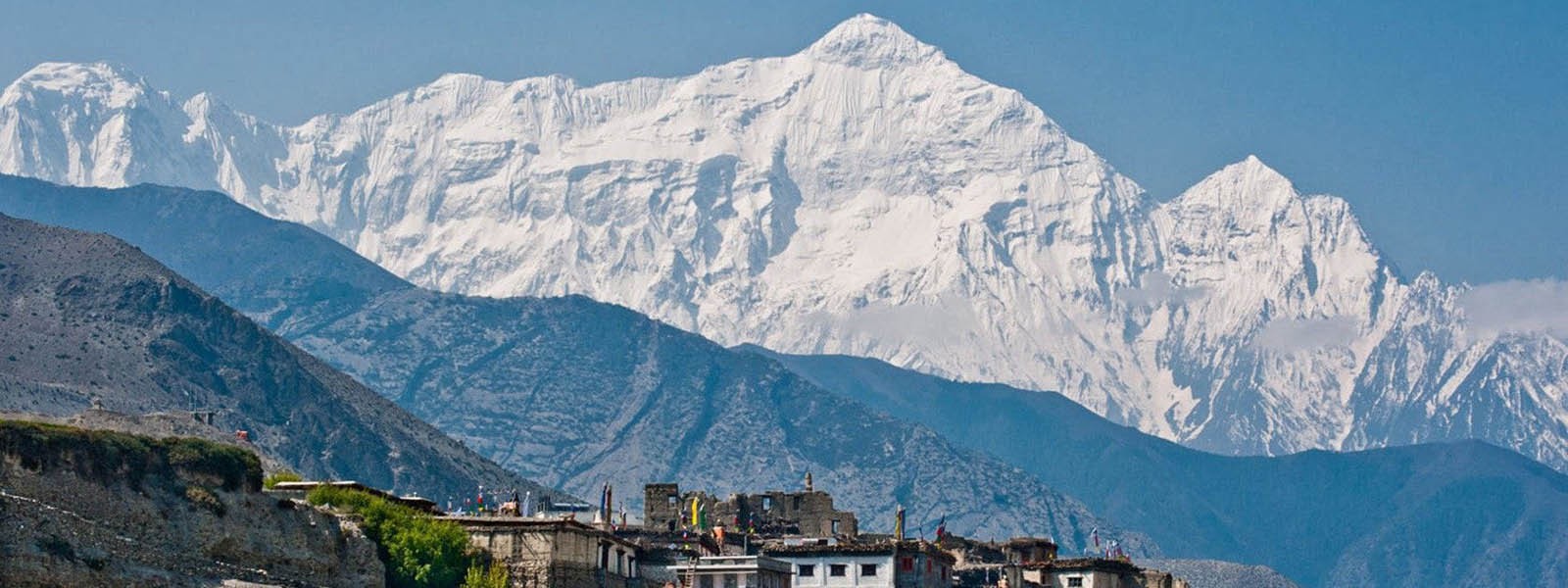
Max Height
Trip Days
Difficulty
Price
Annapurna Circuit Trek is one of the longest and most exciting treks that offers different variations and a trekking experience in one go. The trek follows the Annapurna route throughout the journey and is a complete package of several other treks around the Annapurna region. The trek rises to an altitude of 5,416m on the Thorong La pass, touching the edge of the Tibetan plateau. This trek crosses two different river valleys and encircles the Annapurna massif, crossing Thorong La (5416m/17769 ft), the highest pass on this trek. The trek begins at Besisahar in the Marshyangdi River valley and concludes in the Kali Gandaki Gorge.
The trek starts from Besisahar and moves through many villages and human settlement areas. The ever-expanding terraced fields and landscapes offer you the best experience along with magnetic glimpses of Himalayan peaks. Walking through the village areas, we also get a chance to enjoy the traditional and unique culture of Brahmins, Tibetan, Thakali, and Gurung communities. Several monasteries, gompas, and Chortens decorated with colorful Buddhist flags during our journey reflect the people’s inclination towards the Buddhist religion. You get to know the traditional culture and way of life of remote Nepalese people. The brightly colored and well-kept tea houses and restaurants are found along the way where you can get good rest and enjoy the traditional Nepalese cuisine.
Another interesting place we visit on this trek is Muktinath and Poon Hill. Muktinath (God of Salvation) is one of the religious places in Nepal, where devotees throng from all over Nepal. The place is equally famous as a tourist destination. The 108 water sprouts and abundant fossils found in this area make it very special for tourists and religious people. And from the top of Poon Hill, you get to view the exquisite panoramic beauty of the Annapurna range with a view of the Peaks like Mount Annapurna, Hiunchuli, and many others.
Apart from these places we visit in this circuit trek, the striking natural beauty with a magnificent close-up view of the mountain, the ever-expanding vast landscapes, valleys, gorges, waterfalls, passes, and hot water springs make this trek the famous and most sought treks in Nepal.
Trip Highlights:
The given cost are per person and exclude international flights. Given below are the departure dates available for online booking. If the given date is not favorable then please write us and we will happily customize your trip on dates more appropriate for you.
| Start Date | End Date | Status | Price | |
|---|---|---|---|---|
| 1st Apr, 2024 | 20th Apr, 2024 | Available | USD 1274 | |
| 4th Apr, 2024 | 23rd Apr, 2024 | Available | USD 1274 | |
| 7th Apr, 2024 | 26th Apr, 2024 | Available | USD 1274 | |
| 10th Apr, 2024 | 29th Apr, 2024 | Available | USD 1274 | |
| 13th Apr, 2024 | 2nd May, 2024 | Available | USD 1274 | |
| 16th Apr, 2024 | 5th May, 2024 | Available | USD 1274 | |
| 19th Apr, 2024 | 8th May, 2024 | Available | USD 1274 | |
| 22nd Apr, 2024 | 11th May, 2024 | Available | USD 1274 | |
| 25th Apr, 2024 | 14th May, 2024 | Available | USD 1274 | |
| 28th Apr, 2024 | 17th May, 2024 | Available | USD 1274 |
Physical Fitness
Many people have questions as to what level of physical fitness is required for visiting Nepal, and that is extremely reliant on what activity the visitor is engaging in. With that said, for a standard trek of moderate grading (Everest Base Camp Trek is an example of moderate) the daily activity will be 7-8 hours, and elevation will generally not exceed 5,500 meters. The day’s trekking is sustained and will involve both long steep climbs, and descents with a variety of terrain underfoot from well-trodden paths, to rocks covered with ice or snow. A typical day would include a number of climbs or descents of 500 meters or more, starting after breakfast, resting at lunch, then continuous trekking until arriving at the teahouse.
In preparation for the trek, it is important to begin a training requirement at least 4 months before departing for Nepal. Three to four hours of aerobic exercise like running, walking, swimming, cycling & some gym work per week is the minimum and most will find it beneficial to add some basic strength training to their physical fitness routine. One of the best ways to prepare is to take practice hikes with a daypack roughly the same weight as what you will be taking on the trek. Do this only after a baseline of fitness has been reached. Moving fast is not the end goal, rather endurance is the focus, and will provide a more enjoyable and safe adventure.
Trekking Seasons in Nepal
There are two main seasons in which Nepal sees the most amount of visitors. Fall (September through November) being the most popular, and spring (March to May) coming in close behind. The summer months of June, July and August are the monsoon season and as such the trails are mostly washed out, and roads can sometimes be impassible due to landslide activates. Not to mention the view is non-existent. Still, there are a few places that lie in rain shadow areas and see significantly less rain if any at all, and summer can be a good time to visit these places. Winter is dry, but extremely cold and high passes become inaccessible due to ice and snow conditions. The temperature doesn’t usually fluctuate to a greater degree and the daytime temperature is around 20-25 degrees. However, the temperature starts to decrease as you gain altitude. The temperature can drop to around 0 to -10 degrees at night when staying at tented camps in Himalayan regions. However, it does not change as much in lower hilly regions and the nights are slightly colder than days.
Fall is the most popular because it’s after the monsoons, and the air is dry, the days are sunny, and everything is green in the lower valleys from the excessive rains. Spring is a popular choice because some rain returns, but the weather is generally warm and dry, and flowers are in bloom in the lower elevations.
Trekking Day
A typical trekking day begins with a cup of tea at around 6 in the morning. It is advised to pack your trekking gears in a duffle bag and essential supplies in your day pack in these early hours. After having breakfast, we begin the trek and head along the trail at around 8 am. The morning walk is designed to be longer as we begin with refreshed bodies and enthusiasm. Following a good morning’s walk, we make stop for lunch at around 11.30 am. The lunch involves group meals enjoying the vicinity around the stop. You can explore the surrounding or use the time according to your own consent. After resting for about an hour or two, we resume our trek to reach teahouse or camp by 3-4 pm. The afternoon walk is relatively shorter and can involve games and side trips as organized by the trekking guides. You also can enjoy breaks during the trek to relax, read or stroll around the area. You can converse with the local people and observe their lifestyle. Dinner is served around 7 in the evening to round off the day.
Meals and Accommodations
During the length of the trek, the accommodation style is commonly referred to as teahouse. These are family-run basic lodges that fill the role of the restaurant, meeting place, and boarding house for tourists. Electricity can be found in the rooms, which means one light bulb, and one or two outlets for charging electronics. The common areas are also lit by electricity. Teahouses may use solar, hydroelectric, or have electrical lines running into the village, so the commonality and availability of electricity may vary.
Most teahouses have private rooms, though if the trek is in a more remote or high altitude place dormitories are the norm. Each room has 1 or 2 single beds with basic bedding, and the bathroom is shared. Expect a mix of western and squat style toilets in the bathrooms.
Breakfast and dinner are taken at the teahouse and these lodges have large family style dining rooms centered on a stove to provide heat. The menu will have Nepali style western foods such as pasta, pizza, pancakes, burgers, and fries. Also on the menu is the traditional Dal Bhat meal. This is a lentil soup with rice and vegetable or meat curry. Most menus will also offer a smattering of local cuisine.
Travel Insurance
Many expeditions and tours require that travel insurance is purchased prior to arriving in Nepal, but other treks and tours may not. However, travel insurance is definitely an important consideration. There are a number of reasons to consider insurance. Firstly, it may be required, so check to see what is being asked for by the company. Second, Nepal is a landlocked country, and there are few direct flights. Travel in and out can encounter some disruptions and if purchasing insurance, make sure flight delays and cancellations are included. The next reason to choose insurance is that, though every safeguard is in place during your tour, there are always extenuating circumstances that may result in an accident. Read the fine print of insurance policies to ensure trekking or any other activity you are engaging in is covered, as some policies have stopped covering trekking in certain places. It is impossible to have a relaxing trip without the comfort of good insurance, so do the research and choose carefully.
Nepal Visa Entry Procedure
For entry into Nepal, there are visa requirements everyone (except Indian nationals) must complete before being allowed to pass through immigration. This is for air travel as well as overland transportation. Most visitors may obtain a visa to enter Nepal, however, there are exceptions. There are a number of entry points where you can obtain the visa upon arriving by land, but Tribhuvan International Airport is the only one for air transport.
Visa on Arrival Tourist Visa
Three options are available for entry
15-day single entry: US $30
30-day single entry: US $50
90-day multiple entries: US $125
Please have a passport valid for at least 6 months from the time of entry, and have cash ready, preferably in US dollars, though there are other currencies Nepal Immigration accepts. If you are entering via overland, you must have US cash and 3 passport photos. For arrival by air, the kiosks at the airport take your picture for you.
For the most up to date list of exceptions for visa on arrival or to obtain the most current visa information, visit the Nepal Department of Immigration website.
Acute Mountain Sickness (AMS)
Acute Mountain Sickness is usually seen in un-acclimatized people shortly after ascent to high altitudes. The condition occurs due to the thinning of air as the altitude increases. The condition, if not taken seriously and treated immediately, can be life-threatening and its symptoms can be seen generally above 3000 meters. Some of the symptoms of AMS are nausea, vomiting, tiredness, shortness of breath and cerebral pain. The treks are designed to properly acclimatize you to the change in high altitude climate and sufficient precautionary measures too are taken to take utmost caution. We also equip our staffs with cell phones and satellite phones in occurrence of any emergency cases. We are greatly driven to keep the safety and security of our clients as our foremost concern.
Drinking Water
Water is essential for life, and clean water is imperative while on holiday. When choosing to visit less developed countries it is a concern that all travelers should consider. A few options are available when trekking or traveling in Nepal that will mitigate any chances of drinking contaminated water which could cause disruption of an otherwise fun adventure. The first consideration to take into account is that tap water should not be ingested. That even means when brushing your teeth. Most will choose to buy bottled water and if doing so make sure the cap has not been opened previously. Plastic bottle refuse is a problem, and with that being said there are other options on the market to assist in making water drinkable. Your local outdoor store can help with choosing what option might be best to use in conjunction with a reusable bottle. Your guide can also steer you to water that has been filtered and purified so ask him or her what is available.
Arrival Instruction
Upon your arrival at Tribhuvan International Airport, our company representatives are stationed to welcome you to the country. We request you to carefully look for your name being held by our representatives following the events upon landing. The representatives are responsible to escort you to your hotel in Kathmandu. You will see men offering you to carry luggage and take you to your destination as you exit the airport. We request you to pay no attention to these people and follow the designated representatives and follow their instructions. You will also need to keep an eye on your luggage and belongings to avoid any complicacies.
How to Book Your Tour
Before booking any tour, please read all the terms and conditions thoroughly and call the company representative with any questions prior to making any payments. Begin by filling out a booking form and pay the non-refundable deposit. Fill out the form completely so as not to disrupt the expediency of the process. The form may be submitted online or by downloading the form and mailing or faxing the form to your nearest company representative.
It’s important to understand all aspects of the chosen trip, from what’s included and excluded, to the level of service, or even what trip may be right for your level of experience and fitness. Take the time to get all questions answered so that when booking the trip, it is without trepidation.
Most Memorable Trip - Annapurna Circuit
Joselle Flores
Dec 3, 2018
The BEST experience of my life!!!
Bobby Scalzo
Nov 3, 2017
Annapurna Circuit
Eric Bonilla
Oct 19, 2017